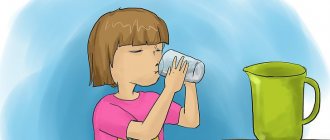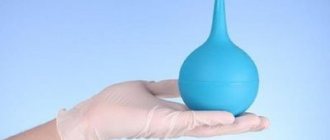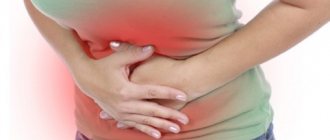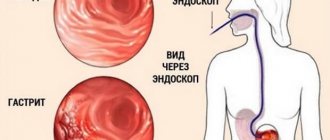Pathologies of the gastrointestinal tract are not uncommon nowadays. According to official medical statistics, every 2nd person on Earth has one or another stomach disorder.
Unfortunately, some patients have problems caused by life circumstances that simply do not allow them to eat properly and in a timely manner. However, for more people, problems appear as consequences that they could easily prevent (gastritis due to frequent fast food meals or abuse of soda).
As a result, a person with a stomach ailment begins to look for and practice various methods of treating it. As a rule, eliminating pathologies of the gastrointestinal tract requires high-quality drug therapy, organized jointly with the treating gastroenterologist. If the manifestations of the disease are not so strong or the drug course of treatment requires a high-quality supplement, it is worth resorting to the use of traditional methods of treating it.
Perhaps one of the most used and effective among homemade medicines are herbal recipes. It is the use, effectiveness and preparation of these that will be discussed today.
Collection option No. 1
The first complex of medicinal plants to eliminate severe coughing attacks in children and adults. It consists of three basic herbs that are actively used in folk medicine:
- Coltsfoot. Promotes rapid expectoration of mucus. Infusions from it are used mainly to eliminate dry cough;
- Marshmallow root. It helps clear the upper respiratory tract of accumulated mucus and thus speed up the healing process. Marshmallow syrup is often prescribed for wet coughs to eliminate phlegm;
- Oregano. This herb has a calming effect. During a long-term illness, the mucous surfaces of the human oral cavity are inevitably subject to irritation, which in folk medicine is eliminated by oregano tea.
Note! Since oregano herbs, which are in the complex, can cause negative reactions in the body (for example, scabies, uterine bleeding, rash), cough collection No. 1 is prohibited from being used by pregnant girls.
What number of chest collection should I use for a dry cough?
Breast collection No. 1 for dry cough contains coltsfoot and marshmallow root: in folk medicine they are used to form and remove sputum.
It must be taken in the following cases:
- When coughing during ARVI;
- When treating influenza;
- For infectious respiratory diseases.
This herbal complex gives good results when taken in parallel with other medications prescribed by the doctor.
How to use?
To improve the patient’s health and achieve the fastest possible recovery, it is necessary to comply with the dosage of the drug. The method for preparing it is as follows:
- 1 tbsp. Place the chopped herbs in a deep metal bowl. The mixture should be poured with 1 glass of cool water;
- Boil the herbs in a water bath for 15-20 minutes, then let the liquid cool;
- Strain the resulting herbal infusion using gauze.
It is recommended to take the drug after meals at least twice a day, half a glass at a time. The duration of therapy depends on the degree of the disease. In the case of colds, 1 week is enough; for bronchitis or tracheitis, the duration of therapy can be up to 3 weeks. Taking the infusion should not be completed until the coughing attacks have completely disappeared.
Rules for the implementation of traditional medicine
Herbs for intestinal healing
When deciding to treat diseases of the intestines or stomach with the help of folk remedies based on medicinal herbs, you need to know the basic rules for the implementation of alternative medicine.
The list of the main ones includes:
- Maintaining the safety of therapy, which consists in using those components of a homemade medicine that are fully suitable for the pathogenesis of the pathology present in the patient, and are guaranteed not to cause an allergic reaction in the latter.
- If it is not possible to guarantee the presence of such circumstances, at least partially, then the use of specific folk remedies for the treatment of gastrointestinal diseases should be abandoned and a more or less worthwhile alternative should be found.
- Using only high-quality raw materials for the preparation of medicines. This also requires a high-quality approach to the selection of herbs that will be used for the manufacture of folk remedies. At a minimum, the plants must be purchased at a pharmacy, manufactured in compliance with GOST and be in proper condition for consumption (not expired, not spoiled, etc.).
- Proper preparation of the products used and organization of their use. Here, it is important to fully comply with the procedure for preparing the medicine and not neglect the rules for its use (even those that may seem completely formal). Do not forget that violation of this particular right occurs most often and can cause considerable damage to the health of a person who experiences all the delights of traditional medicine.
At first glance, the noted rules in the implementation of methods of traditional therapy for gastrointestinal ailments may seem quite difficult to follow. In fact, there are no difficulties in this, and in practice everything looks much simpler than in theory.
Do not forget that the main thing in the treatment of any pathology of the body is to do no harm; in the case of gastrointestinal therapy, such a formulation reflects the essence of the matter more than enough.
Collection option No. 2
The composition of this medicinal product includes the following plants:
- Plantain. Plantain leaves help normalize expectoration (which is especially important for wet coughs) and stabilize the functioning of the human respiratory system;
- Liquorice root. “Kills” pathogenic microbes that lead to respiratory inflammation;
- Coltsfoot. The plant reduces the severity of dry cough, produces sputum and helps in expectoration in the future.
Note! Breast collection No. 2 should not be consumed during pregnancy: the licorice contained in it can cause harm to the fetus.
In addition, the drug should not be used by people allergic to the herbs from which it is made. In such cases, it is worth considering the use of other breastfeeding.
In what cases should I take it?
Licorice root and plantain, which are part of the medicinal complex, help eliminate inflammatory processes during colds (for example, acute respiratory viral infection, influenza). It is recommended to be used for tracheitis and other respiratory ailments to increase phlegm.
How to use
Cough herbal collection No. 2 is effective when properly prepared before use. Follow this algorithm:
- 1 tbsp. put the herbal mixture in a metal bowl, pour one cup of boiling water and cover with a lid;
- Boil the liquid over low heat for 15 minutes;
- Remove the vessel from the heat and let the infusion from the breast collection brew for an hour. After this, strain it through cheesecloth to separate the herb from the liquid.
The infusion should be left in the refrigerator or any other cool place. Shelf life - no more than 2 days: after this time, the beneficial properties of the herbs begin to be lost.
Should be taken after every meal, preferably at least 4 times a day. Before drinking, the infusion must be warmed up.
Medicinal mixtures are mixtures of several types of crushed, less often whole, plant materials. The composition of the collection includes various parts of plants: roots, bark, grass, leaves, flowers, fruits, seeds. Multicomponent medicinal herbal infusions have long been used in medical practice, which is explained by the effectiveness and gentleness of their action, the absence, as a rule, of unwanted side effects during long-term use, as well as the ease of preparation. Russia has a sufficient raw material base for many types of medicinal plants, experience in their production and clinical use. Medicinal herbal preparations are the most popular and widely used form of processing of medicinal plant materials.
Compositions from medicinal plant materials, sometimes with the addition of minerals, have been used in medicine all over the world since ancient times. Herbs are especially popular in oriental medicine: Chinese, Tibetan, etc. The recipes for these herbs are distinguished by the complexity of their composition, with a large number of components belonging to various morphological groups of raw materials. In Russian folk medicine, herbs were used less widely, since preference was given to individual medicinal plants.
Multicomponent mixtures from medicinal plant raw materials have valuable advantages over other herbal medicines: the ability to provide the main pharmacological effect in combination with a complex effect on the patient’s body as a whole, gentleness of action and the absence, as a rule, of undesirable side effects. They are quite simple to industrially produce and relatively cheap.
Treatment with multicomponent medicinal herbal mixtures is usually more effective than with single plants. When compiling the collection, it is necessary to take into account the individual characteristics of the patient and the presence of concomitant diseases. When choosing a collection, you need to know your blood pressure and take into account the main trend of its changes. For example, when choosing a collection for a patient with cholecystitis with arterial hypertension, it is necessary that the collection includes plants not only with a choleretic effect, but also with a hypotensive effect, otherwise the treatment may provoke a hypertensive crisis and worsen the general condition. In addition, one should take into account the tendency to constipation or diarrhea; Accordingly, the effect should be of a laxative or astringent nature. The effect of medicinal plant materials largely depends on the dose. Rhubarb root, for example, in large doses is used as a laxative, and in small doses, on the contrary, it has a strengthening effect. Various doses of spicy-bitter raw materials stimulate or inhibit the secretion of gastric juice. Some plants act on the muscles of the uterus and can be dangerous during pregnancy. Herbal infusions and remedies are not recommended to be taken during menstruation. Medicinal plant materials have a versatile effect. This explains the fact that in recipes with different purposes, the same components are often found, but in different quantities and different combinations. Only a doctor can foresee the unwanted side effects of medicinal plants after a comprehensive examination of the patient.
Depending on the types of raw materials included in the collection, infusions or decoctions are prepared on its basis. If the collection includes fragrant essential oil plants, then an infusion is usually prepared from them. Boiling is not allowed, since essential oils are volatile substances that evaporate along with water. Medicinal mixtures contain various biologically active compounds, which, simultaneously with the treatment of the underlying disease, additionally enrich the body with various vitamins, mineral compounds and other plant components that help increase the body's resistance, have a beneficial effect on the central nervous system, improve hematopoiesis, neutralize toxins and accelerate their removal from the body. body. In this case, the influence on physiological processes is carried out by natural, more acceptable organic substances for the body. Allergic complications when treated with medicinal herbal preparations are observed much less frequently than when using other medications (for example, of chemical origin). The versatile effects of plant biologically active substances often achieve their goals. Thus, when prescribing a complex collection for liver diseases, immortelle substances increase the secretion of bile, gastric and pancreatic juice, increase the tone of the gallbladder, and change the chemical composition of bile. Substances contained in corn silk have a beneficial effect on metabolism and improve bile secretion. Barberry substances reduce and relieve pain, which is due to the presence of the alkaloid berberine, which has an antispasmodic effect. For the same purpose, a peppermint leaf is often added to such a collection.
In addition to organic substances, the collections contain macro- and microelements that are involved in metabolism and are in functional interaction with enzymes, vitamins, hormones and other biologically active substances. Manganese, copper, zinc, cobalt in microdoses stimulate the production of antibodies and increase the body's resistance. Copper, iron, zinc, cobalt reduce the permeability of biological membranes. When treating a patient with multicomponent medicinal preparations, proteins, amino acids, carbohydrates, lipids, enzymes, vitamins, organic acids, alcohols, aldehydes and ketones, esters of phosphoric acid and other acids, phytosterols, resins and tannins, glycosides, terpenoids, coumarins are introduced into the body , amides and amines, betaines, choline and choline esters, purines and pyrimidines, alkaloids, bitter substances and many others.
The most popular medicinal herbal infusions are: antimicrobial, gastrointestinal, urological, thoracic, sedative, choleretic, antisclerotic, antispasmodic, carminative, diuretic, antiasthmatic.
Diseases of the gastrointestinal tract are quite widespread, accounting for 35–37% of the total morbidity of the population. The most common among them are gastritis, peptic ulcer, enterocolitis. Therapy for inflammatory and destructive diseases of the gastrointestinal tract is aimed at correcting disorders of gastric secretion, motor function of the stomach and intestines, intestinal digestion, and also involves influencing the altered mucous membrane of the stomach and intestines. The use of synthetic drugs does not always have the desired effect in this pathology; In addition, the development of adverse reactions and complications is possible. In such cases, as well as for the prevention of exacerbations of chronic diseases of the gastrointestinal tract, herbal preparations are very promising. The gastrointestinal collection is a combined preparation of plant origin, containing five types of herbal medicinal raw materials. The infusion of the collection has antispasmodic, anti-inflammatory, choleretic, sedative, and regenerative effects. The effect is determined by the essential oil, polysaccharides, and flavonoids contained in chamomile flowers; essential oil from mint leaves, the main components of which are menthol, flavonoids, vitamins; essential oil from dill fruits.
Inflammatory diseases of the bronchi are now widespread and are one of the most common causes of loss of performance. Antibiotic therapy used for their treatment often leads to the development of allergies, the formation of resistance of microorganisms with loss of sensitivity to antibiotics during subsequent courses of treatment, the development of dysbiosis and an increase in the number of fungal diseases. Experience in the clinical use of chest collection demonstrates its effectiveness and feasibility of use in infectious and inflammatory processes in the bronchi as an auxiliary or alternative medicine, free of unwanted side effects. The medicinal effect of the collection is due to the antibacterial effect of chamomile flowers, wild rosemary shoots, calendula flowers, the expectorant and enveloping effect of licorice roots, violet grass and wild rosemary shoots, the anti-inflammatory and antispasmodic effects of licorice roots, chamomile flowers, calendula and mint leaves.
Recently, there has been a significant increase in the prevalence of conditions caused by increased physical or mental stress, exposure to adverse environmental factors, growing information loads, and stress. In such conditions, chronic fatigue develops, which leads to the development of insomnia, increased nervous excitability, irritability, neurasthenia, cardiovascular neuroses, tachycardia, hysteria, migraine, vegetative-vascular dystonia, menopausal disorders, and arterial hypertension. There are a lot of medicinal plants that have a sedative effect. The sedative, antispasmodic, hypotensive effect of the sedative collection is due to the medicinal herbs included in it. The effect is determined by the essential oils, saponins, tannins, and alkaloids contained in motherwort herb; peppermint leaves contain menthol; in rhizomes with valerian roots - ester of borneol and isovaleric acid, free valeric and other organic acids, alkaloids (valerine and hatinin), tannins, sugars; licorice roots contain licurazide, triterpenes, glycyrrhizic acid and flavonoids; thyme herb contains essential oil, tannins and bitter substances; in oregano herb - thymol, flavonoids, tannins; in hop cones – essential oil, organic acids, alkaloids, flavonoids, lupulin; in the sweet clover herb - coumarins, melitoside, polysaccharides.
The preparation of infusions and decoctions from collections of medicinal plants is not fundamentally different from the preparation of these preparations from the raw materials of individual medicinal plants. Specific instructions for preparing infusions and decoctions from collections usually give the following ratio: 1–2 tablespoons of the mixture per 200 ml of water.
In all cases, to completely extract the active substances, much more water is taken than when preparing similar medicines in a pharmacy. Therefore, the prepared medicine is most often taken not with spoons, but in 1/3–1/2 cups. If the infusion or decoction is prepared daily, it is not subject to microbial contamination and can be stored at room temperature throughout the day. For larger quantities, it should be stored in the refrigerator, but no more than two days.
Usually, when treating with medicinal plants, improvement occurs within a few days, but a lasting effect can be achieved only with long-term and regular use of medicinal herbs. The absence of a positive effect within 2–3 weeks is usually grounds for replacing the collection. The course of treatment with the fees should be determined by the attending physician with constant monitoring of the patient’s health.
When treating chronic patients with plant herbs, they are taken for a long time. To avoid getting used to them and reducing the effectiveness of the therapeutic effect, it is recommended to take a break for 1-2 weeks after each course of treatment (1.0–1.5 months). For the same reasons, it is advisable, after 2-3 courses of treatment with one of the preparations, to switch to treatment with another, which has a similar effect.
Information about the authors: Samylina Irina Aleksandrovna – Doctor of Pharmaceutical Sciences, Professor, Corresponding Member of the Russian Academy of Medical Sciences, Director of the Research Institute of Pharmacy; Head of the Department of Pharmacognosy MMA named after. THEM. Sechenov. Tel.; Sorokina Alla Anatolyevna – Doctor of Pharmaceutical Sciences, Professor of the Department of Pharmacognosy of the MMA named after. THEM. Sechenov. Tel.; Pyatigorskaya Natalya Valerievna – candidate of pharmaceutical sciences, associate professor, deputy director of the Research Institute of Pharmacy for scientific work. Tel.
Collection option No. 3
Breast collection No. 3 is made from medicinal plants that are used in the field of alternative therapy. Components of this breast collection:
- Anise. A plant that is used not only as a spice: its infusion promotes expectoration of sputum and prevents the development of pathogenic bacteria;
- Pine buds. Act as a disinfectant, killing pathogenic microbes, and thereby preventing inflammatory processes;
- Sage. The herb eliminates swelling of the throat, which is equally common with wet and dry coughs, and has a sedative effect on the affected areas of the respiratory tract;
- Marshmallow root. Promotes an increase in sputum and accelerates the expectoration process.
Contraindications to the use of breast milk No. 3: allergy to the herbs included in its composition. Also, it should not be drunk by pregnant women, since pregnant women are prohibited from taking medications and preparations containing anise.
In what cases should it be used?
Herbal mixture No. 3 for cough can be prescribed by a general practitioner for acute respiratory viral infections, influenza, lung diseases (for example, pneumonia) and other respiratory ailments.
The use of this medicinal and herbal preparation is equally effective for wet and dry cough.
How to use
To get rid of the disease as quickly as possible, strictly follow the instructions for preparing the drug before using it:
- 2 tbsp. Place the mixture of chopped herbs in a metal bowl and pour 1 tbsp. hot liquid;
- Boil the liquid over low heat for 15 minutes, then let cool;
- Separate the herb from the infusion using a gauze bandage.
The infusion must be stored in a cool place (can be in the refrigerator), and warmed up before use. It is recommended to consume at least 3 times a day in half a glass portions. The standard course of therapy is 3 weeks.
Collection option No. 4
Chest collection No. 4 is intended for coughs of various forms: wet and dry. It is made from plants that are natural anti-inflammatory and expectorant agents. Below is the composition of this breast collection:
- Chamomile. Its dried leaves relieve irritation and have a calming effect on the irritated oral cavity;
- Swamp wild rosemary. Prevents the spread of pathogenic bacteria in the throat and mouth;
- Violet petals. Helps eliminate frequently recurring coughing attacks and has a sedative effect;
- Peppermint. Stabilizes the patient’s respiratory system;
- Calendula. Promotes the formation of sputum and improves expectoration during wet coughs.
The main difference between this drug is its expanded composition: for its production, the maximum number of plants is used, which help to heal as quickly as possible. Contraindications to breast collection No. 4 – allergy to the herbs that are contained therein. The use of breast milk No. 4 during pregnancy is permitted under medical supervision.
When to use
Chest fees No. 4 are prescribed for the treatment of bronchitis, laryngitis, severe coughing attacks and diseases of the bronchi (for example, bronchitis). Often breastfeeding number 4 is prescribed to improve the health of a patient with flu and colds. In addition, it is prescribed to relieve runny nose and cough during pregnancy.
How to use
The algorithm for preparing this herbal preparation is practically the same:
- 2 tbsp. herbal mixture should be poured 1 tbsp. boiling water and cover with a lid;
- The liquid must be simmered over low heat for 15 minutes, then removed from the heat;
- The broth should be left for one hour, and when finished, strain through a gauze bandage.
The tincture is taken until complete relief from the disease, twice a day after meals, in half a glass portions. It is better to warm it up before use.
Can breastfeeding be given to babies?
Children are allowed to use chest preparations for severe coughs, however, there are age restrictions for each herbal composition:
- Severe cough mixtures No. 2 and 4 for children over 3 years old are often prescribed by specialists to get rid of severe coughing attacks and cold symptoms;
- Breastfeeding sessions No. 1 and 3 are allowed for children aged 12 years and older. Prescribed for the elimination of ARVI, treatment of respiratory inflammation, asthma.
Doctors do not recommend giving breastfeeding mixtures to children under 3 years of age and infants, since there is no information on the successful treatment of respiratory tract ailments with such decoctions.
You should start treatment only after consulting a therapist: this advice is especially relevant for pregnant women. Taking the tincture should be combined with breathing exercises and taking suitable medications with an expectorant effect, prescribed by a doctor.
Is it possible to drink breast milk during pregnancy?
Breastfeeding can be taken while pregnant, but only under the strict supervision of a doctor. Not all herbs from which these herbal complexes are made have a beneficial effect on the health of mother and baby:
- Breast collection No. 1 is not recommended for use during pregnancy (3rd trimester), since the oregano it contains sometimes causes uterine bleeding;
- Herbal complex No. 2 contains licorice root extract, which lowers the level of female hormones of the expectant mother and, with constant use, can even lead to miscarriage;
- Breast collection No. 3 for coughing attacks contains anise, a spice that is not allowed for expectant mothers.
You can cure a severe cough in a pregnant woman with herbal complex No. 4, which, although it contains a small percentage of licorice root, is not as dangerous for the body of the expectant mother and fetus as previous herbal combinations. In any case, therapy should be started only after prior consultation with your doctor.
A few words about the use of folk remedies
Chamomile is a popular plant
When starting to consider treatment of the gastrointestinal tract (GIT) with the help of herbs, it is extremely important to understand the basic thing - what is folk therapy for ailments of the body, what principles should be followed when organizing it, and also how effective it is.
Naturally, each of the questions posed requires a detailed review, so let’s talk about everything in order. First of all, let us pay attention to the essence of traditional medicine, which is not limited to dubious methods of treating ailments.
Surprisingly, in recent years, doctors not only did not limit their patients regarding therapy using traditional methods, but even began to advise them to resort to them.
However, in this aspect, it is extremely important to understand that not a single good doctor will tell his patient to treat his illness exclusively with homemade medicines, represented by decoctions or infusions.








